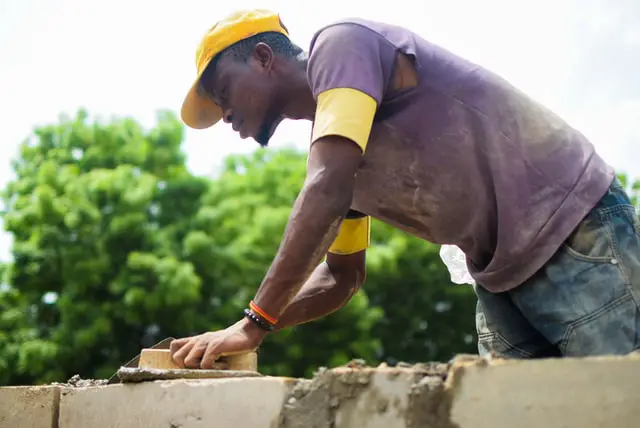Part of the fun of having your own house and garden is being able to make permanent or long-lasting alterations to suit yourself and your design aspirations. For me, a lot of the joy of having a home is being able to create a little piece of paradise in the garden, whether it be a small townhouse garden or a larger, more expansive area with plenty of green grass, shrubs, trees and flowerbeds. Having had both, I can honestly say that they each have their own merits and appeal, and each offers different potential to any gardener.

Transform your small garden space with built-in furniture
A small townhouse garden is, necessarily, very limited on space and the number of large items you can place in it without it looking overcrowded or just plain messy. If you love brightly coloured flowerbeds, however, one way of expanding on the space you have available is to get a local bricklayer in and ask him to construct tiered garden beds which are constructed vertically rather than horizontally. These beds can be straight, angled, curved or freeform in shape. It all depends on what effect you want to achieve. If you are very brave and not prone to changing your mind frequently, you might even ask him to construct some built-in seating with raised garden beds around the area. In a small garden, a carefully designed and well thought out built-in seating/entertainment area can add much needed space and reduce clutter. Your builder could also incorporate a small fire-pit in the centre of the seating area if you are a fan of fires and enjoy sitting outside during the cooler months. You could even include a built-in braai and serving area which could be used throughout the year in more temperate areas. All you really need is a plan of what you want, and a good bricklayer to turn that plan into reality.
Tiered planting beds require an experienced builder’s input
If you are planning on tiered planting beds, you definitely need an experienced bricklayer to create these. He will include vital elements such as drainage holes, strengthened foundations and double-layer walls so that they do not collapse or fail under the weight of soil and water. I made the mistake early in my planting career of using an inexperienced bricklayer to build a few simple garden beds for me, thinking that he instinctively (yup – stupid assumption!) knew that double walls were required, as well as a basic starting foundation for the walls themselves. The finished work looked good and was neat and tidy, but the walls cracked and bulged within a few months of planting and ultimately collapsed when the heavy winter rains arrived in force. Not only was my carefully planned garden a total mess, but I lost more than a few of my beautiful plants during the salvage operation. But, on the positive side, it was a good lesson to learn and one which has never been forgotten.
Brickwork is more than just putting one brick on another …
A good bricklayer will build any structure which is physically possible, with all the underlying support elements to ensure that the structure will stand for many years without cracking or posing a danger to those around it. Taller structures such as chimneys for built-in braais need to be stable enough to withstand high gusting winds or long periods of waterlogged soil due to excessive rainfall levels – in other words, they need a good foundation to start with and good quality cement mix to prevent the bricks cracking during extreme temperature fluctuations. These are factors which an experienced and knowledgeable bricklayer will calculate from the outset. Whatever you do, don’t haggle with a qualified and knowledgeable ‘brickie’ who tells you that he needs more materials or better-quality materials than those you had initially accounted for in your costings. You need to remember that he is the expert, not you, and he should have the final say on the materials and quantities required.
Ensure your brick paving fits the garden scheme
If you choose not to have grass laid because you prefer the clean look of brick paving and couldn’t be bothered with the task of maintaining and cutting a lawn on a regular basis, make sure that you choose the right bricklayer to tackle this job. You want to have a finished product which looks good, is professionally laid and sticks to the original pattern with no unsightly gaps, large expanses of cement in some areas or too many half bricks used to fill in areas which do not fit together neatly. This would not be a problem if you are after a rustic, craftsman-effect paved area in a garden which is given over to a very informal apparently self-seeded planting scheme, but not great if your beautiful herringbone pattern pathway veers off course because of unplanned brick shortages or drains which have not been factored into the pattern.
Laying bricks, whether vertically or horizontally, is no easy task and is back-breaking work at the best of times, so make sure that it is done right, first time. You don’t want to have to re-do any structural work because of poor workmanship or inferior materials, so go for the best from the outset. Trust your bricklayer, take his advice and watch him transform your garden area into your own slice of paradise …

